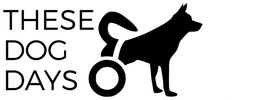|
5/10/2020 2 Comments WalterMeet Walter the Borzoi from Central Florida. Walter was diagnosed with bilateral mature cataracts and micropthalmia at ten weeks old. Micropthalmia in dogs is a condition where they are born with abnormally small eyeballs, which typically leads to other malformed eye structures and varying levels of vision impairment. When combined with cataracts, this means that Walter has little to no vision.
A huge thank you to Samantha for taking the time to share your experience with Walter and passing on some great advice for others caring for vision impaired dogs.
2 Comments
4/25/2018 10 Comments EDNAToday we speak with Kindel about life with Edna. Edna has cerebellar hypoplasia which is a congenital disorder in which the cerebellum (the part of the brain responsible for coordination) does not fully develop. In Edna's case her cerebellum is almost non-existent. Cerebellar hypoplasia in dogs is often not noticed at birth and only becomes apparent at around 6 weeks of age when they become more active. Dogs with this condition can appear uncoordinated and display jerky movements, or tremors. Edna is a great example of the fact that while there is no treatment for cerebellar hypoplasia dogs, with a little extra care they can often go on to live happy lives. Thanks to Kindle for sharing her experience and advice on how to care for a dog with cerebellar hypoplasia. Read on for Kindle’s recommended products to support cerebellar hypoplasia dogs, such as this playpen, harness and floor mats. If you have more advice to share please leave a comment below. What is a regular day like with Edna?4/14/2018 1 Comment QUINN & GRAYToday we talk to Alicia from Schwenksville, Pennsylvania about life with Quinn and Gray, two Great Danes born with genetic deformities. She shares their story as well as some advice on caring for disabled dogs. Could you tell me about Quinn and Gray's disability?Quinn and Gray have full body genetic orthopedic deformities including kyphosis, lordosis, angular limb deformities, and stunted growth. Both were normally developing until about 6 weeks of age. We had already chosen Quinn out of his litter. When he was unable to walk and began showing issues we didn’t faulter. He deserved our home and our family. We took him home with a 4 month life expectancy. When he reached his “expiration date” he was doing better than ever expected. He went front being unable to bare any weight on all four limbs to sling walking and standing on his own when propped up. We decided to adopt his brother Gray at that point. Gray had just begun walking on his own. We brought Gray home to motivate Quinn, but we ended up falling in love with him. Quinn and Gray are very much best friends and brothers. They make each others lives complete. What's a regular day like caring for two, big dogs with disabilities? |
Search or select topicsAll Acupuncture Arthritis Bladder Management Blindness Bowel Management Cerebellar Hypoplasia Deaf Degenerative Myelopathy Diabetes Diet Electro Stimulation FCE Genetic Disorder Grooming Hemivertebrae Hydrotherapy Incontinence IVDD Laser Therapy Limb Amputation Limb Deformity Paralysis Physical Therapy Rescue Spinal Injury |
Search by typing & pressing enter



